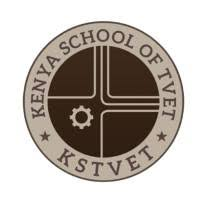Electrical and Electronic Principles and Technology
1. Basic Electrical Principles
1.2. Electrical Power
1. What is an Electrical Circuit?
An electrical circuit is a closed loop that allows current to flow through a path consisting of components like resistors, capacitors, power sources, switches, etc.
2. Basic Circuit Components
| Component | Symbol | Function |
|---|---|---|
| Battery / Cell | 🔋 | Provides voltage (electrical energy source) |
| Resistor | ▭▭ | Limits current, provides resistance |
| Switch | 🔘 | Opens/closes the circuit |
| Wire | — | Connects components (assumed to have no R) |
| Lamp / Bulb | 💡 | Emits light when current passes |
| Capacitor | ||
| Ammeter | (A) | Measures current (in series) |
| Voltmeter | (V) | Measures voltage (in parallel) |
3. Electric Current (I)
-
Flow of electric charge (electrons)
-
Measured in Amperes (A)
4. Voltage (V) / Potential Difference
-
Energy per unit charge
-
Measured in Volts (V)
5. Resistance (R)
-
Opposition to the flow of current
-
Measured in Ohms (Ω)
6. Ohm’s Law
7. Types of Circuits
➤ Series Circuit:
-
Components connected end-to-end
-
Same current through all components
-
Voltage divides across components
Formulas:
➤ Parallel Circuit:
-
Components connected across the same two points
-
Same voltage across each component
-
Current divides between branches
Formulas:
8. Kirchhoff’s Laws
Kirchhoff’s Current Law (KCL):
-
Total current entering a junction = total current leaving
Kirchhoff’s Voltage Law (KVL):
-
Sum of voltage changes around any closed loop = 0
9. Power in Circuits
10. Measuring Instruments
| Instrument | Connected in | Measures |
|---|---|---|
| Ammeter | Series | Current (A) |
| Voltmeter | Parallel | Voltage (V) |
| Multimeter | Both | V, A, Ω |
| Galvanometer | Series (low I) | Small currents |
11. Capacitors in Circuits
In Series:
In Parallel:
12. Time-Dependent Circuits (RC Circuits)
-
Charge/discharge of a capacitor over time
-
RC is the time constant (in seconds)
13. Important Circuit Symbols (in ASCII)
| Symbol | Representation |
|---|---|
| Battery | --- |
| Resistor | —▭— or —//— |
| Capacitor | — |
| Switch | —o/ o— |
| Ground | ⏚ |
| Wire Junction | ● |
14. Common Mistakes to Avoid
-
Confusing series vs parallel voltage/current rules
-
Incorrect instrument placement (ammeter in parallel = 🔥!)
-
Ignoring internal resistance of batteries
-
Forgetting unit conversions (e.g., mA → A, kΩ → Ω)
Summary Sheet
| Quantity | Formula | Units |
|---|---|---|
| Current | Amperes (A) | |
| Voltage | Volts (V) | |
| Resistance | Ohms (Ω) | |
| Power | Watts (W) | |
| Energy | Joules (J) |
